Lower Mississippi River Dispatch No. 967
"Voice of the Lower Mississippi River"
Quapaw Canoe Company ~ Celebrating 27 Years of Service ~
~Winner of the SBA 2024 Small Business of the Year Award~I've been getting a lot of questions about the so-called "pink micro moon." In this issue we highlight the phase of the moon we are still now in (as it wanes towards the old moon). You might have seen it in the news, the "Pink Micro Moon." Is this a thing? Or poetic copy? Keep reading below.
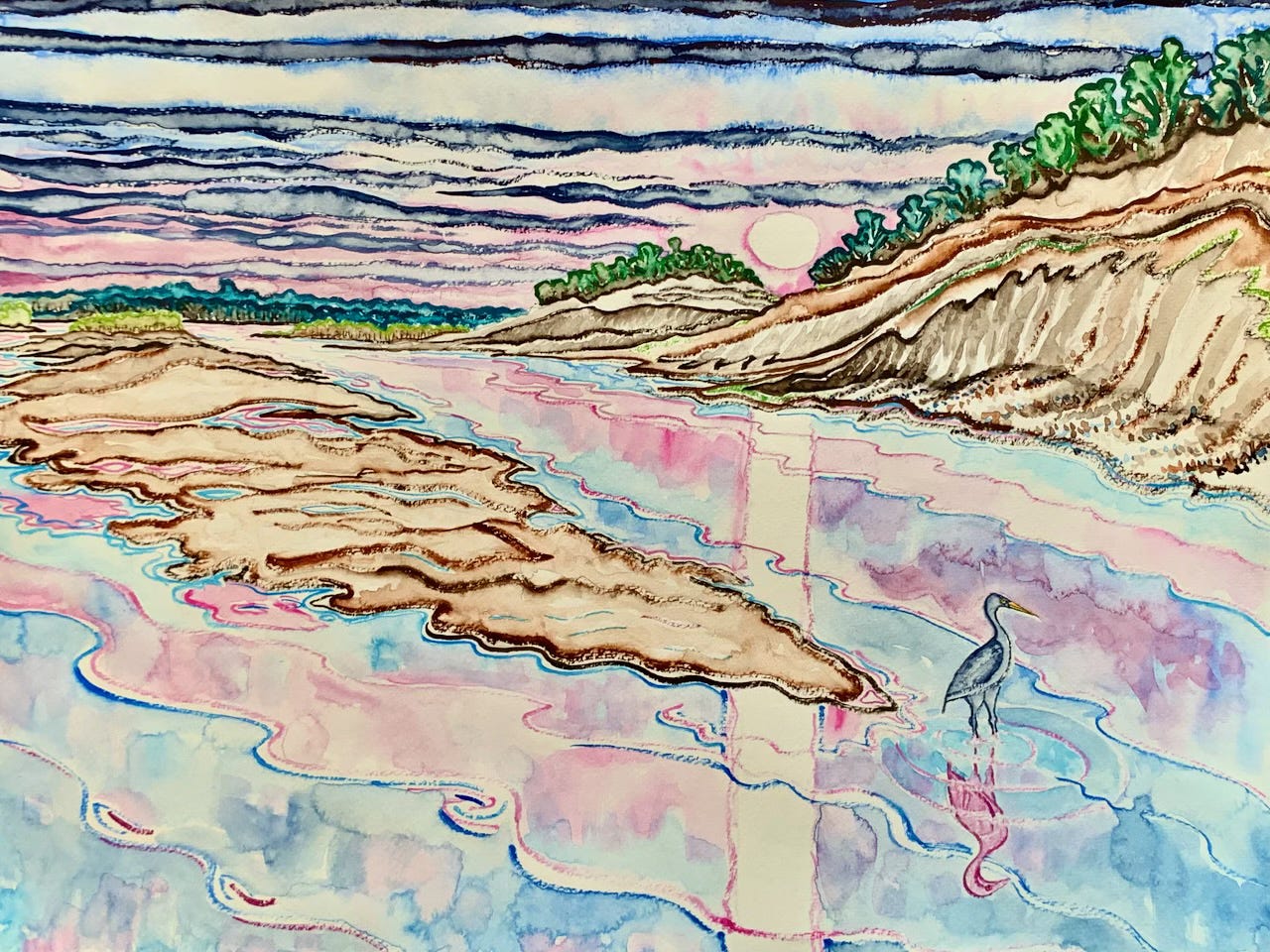
But first, a quick River Update: our big momma Mississippi River crested Sat April 19th at Helena at 46.6, the highest it's been in 5 years, and is now in slow decline, dropped 2/10ths of a foot yesterday. We have been on the river almost every day of the last week, and found a few sweet high spots on a few isolated islands, but all else under water. The river now stretches levee to levee, in some places over 10 miles wide! More photos & description in next issue. (This issue, we're taking a break from the stress of all the surrounding high-water and flooded forests and islands).
What is the "Pink Micro Moon?" First of all, the "Micro" part simply refers to the relative size of the moon. In its annual elliptic orbit around the earth, the moon is now at apogee, which means it is furthest away from us, and appears slightly smaller in the sky. How much smaller? About 5% less than average, and 10% less than how it appears at perigee, when we are closest together. (Another factor is the pathway of the moon through the sky -- you might have noticed how low the full moon passes through the heavens above, the night time sky. It will continue to get lower until June, and then as the months proceed into fall, it will pass higher & higher in the sky, until December. The Summer moon follows the path of the Winter sun. And vice versa). Is it really pink? If so, why is it pink?
The Pink Moon -- Yes, it is a thing! Celestial observations: As nature observer, I've noticed that the dark places on the moon (the dark side of the moon, as well as the moon spots) are slightly tinted by the coloring of the sky around. During clear skies the shadow of the earth projects an unusual and vivid slice of effervescent colors into the atmosphere opposite the sun. At sunset to the east. At sunrise to the west. Always over the horizon away from the sun. The earth's shadow is expressed in a tri-color blue-pink-yellow. So, one answer for the pinkness is the moon in the pink layer! On clear nights there is a tri-color candy colored layering of the sky around the full moon, blue-pink-yellow. Maybe you've noticed also? A rich & dark greenish purplish blue down low, magenta pink in between, and lively yellow above. These are not the typical sunset colors. What makes the colors? This is the coloring created just after sunset, or just before sunrise, over the horizon opposite the sun. Three distinct colors. The dark blue is the shadow of the earth. Literally. Sometimes it is grayish, sometimes purplish, sometimes greenish. The pinkness above is created by the bending of lightwaves around the earth. The yellowness above that is the direct sunlight passing above the earth's shadow, reflected off the atmosphere above.
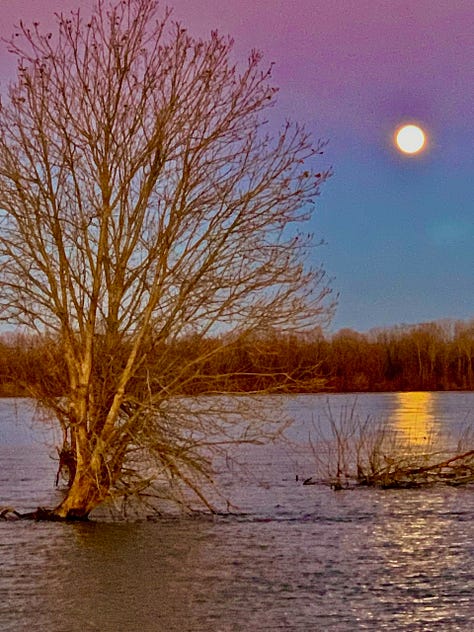
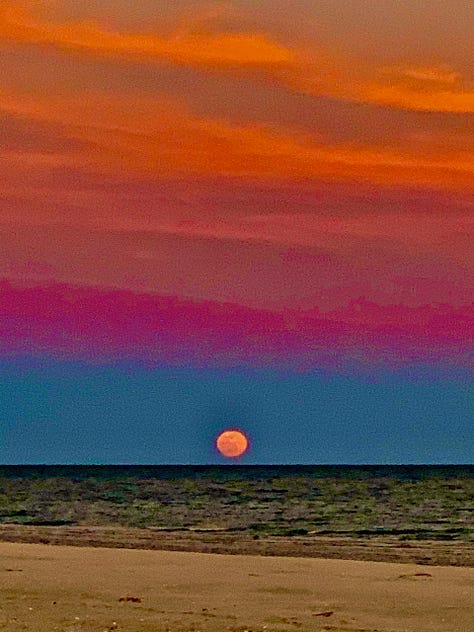
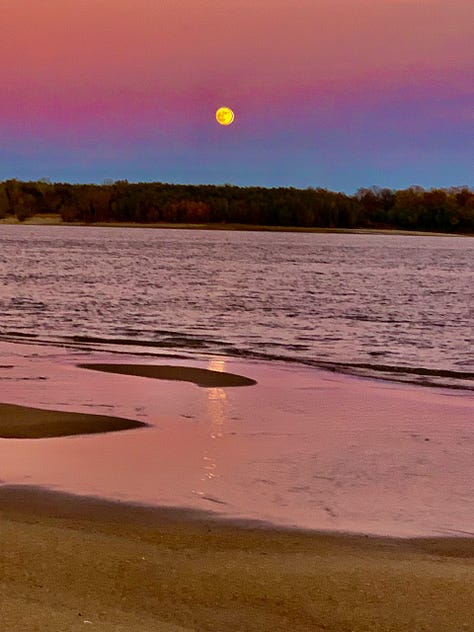
Does the moon take on other colors? Yes -- whatever color is in the sky, the dark side of the moon seem to radiate as if tinted by that same color surrounding.
As the moon slides through its phases, and through earth atmosphere layers, it captures other shades from the yellow-orange-red spectrum more typical of sunsets, (December 2002: Pelican Island, Missouri River)
Another pink reference: pink phlox. One day last week as I was thinking and writing about the pink moon, I decided to look online, and found a reference to the flowering of pink phlox. I was sitting on the banks of the Sunflower River at the time, and lo & behold, what did I discover blooming near me? Several groups of pink phlox flowers! What serendipity. I have never noticed these flowers, anywhere, (although I have seen and admired other varieties of phlox, usually somewhere deep within the southern woods). Delicate pentagon-shaped architecture, with uncoiling spindal-spiral buds, and sweetly perfumed. Phlox has always been one of my favorites. But I never before saw (or noticed) this pink variety. This just goes to show how much there is to see & learn. If you keep your eyes open, every day in nature is a new learning experience!
Other Pink Moon Renderings: sorry for all the astronomy. Never let descriptions get in the way of artistic pleasure! Leaving off here below with a few more examples of earth's shadow tri-color pink full moons I have experienced over the years, straight out of the notebook, all quick sketches. 



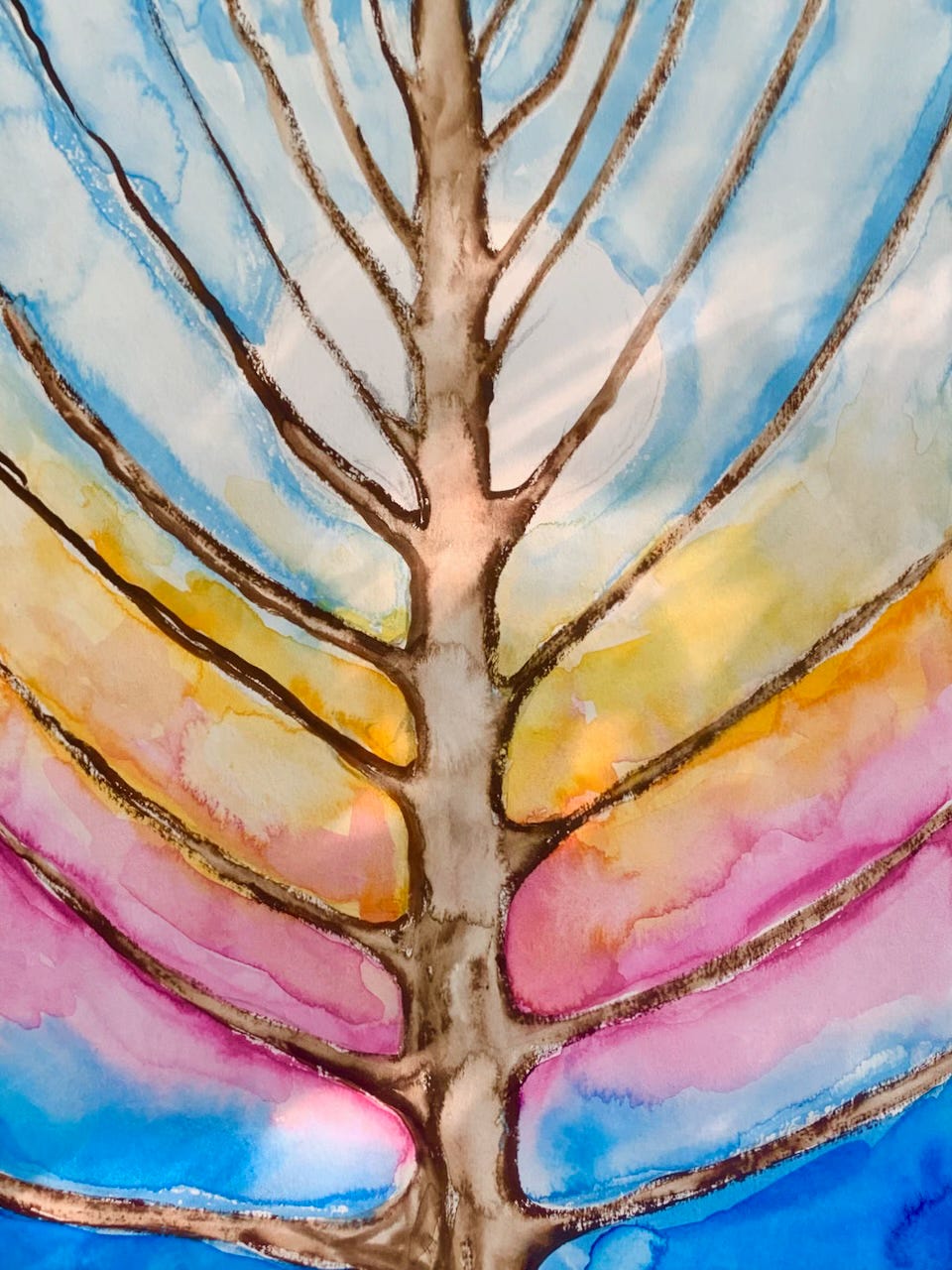

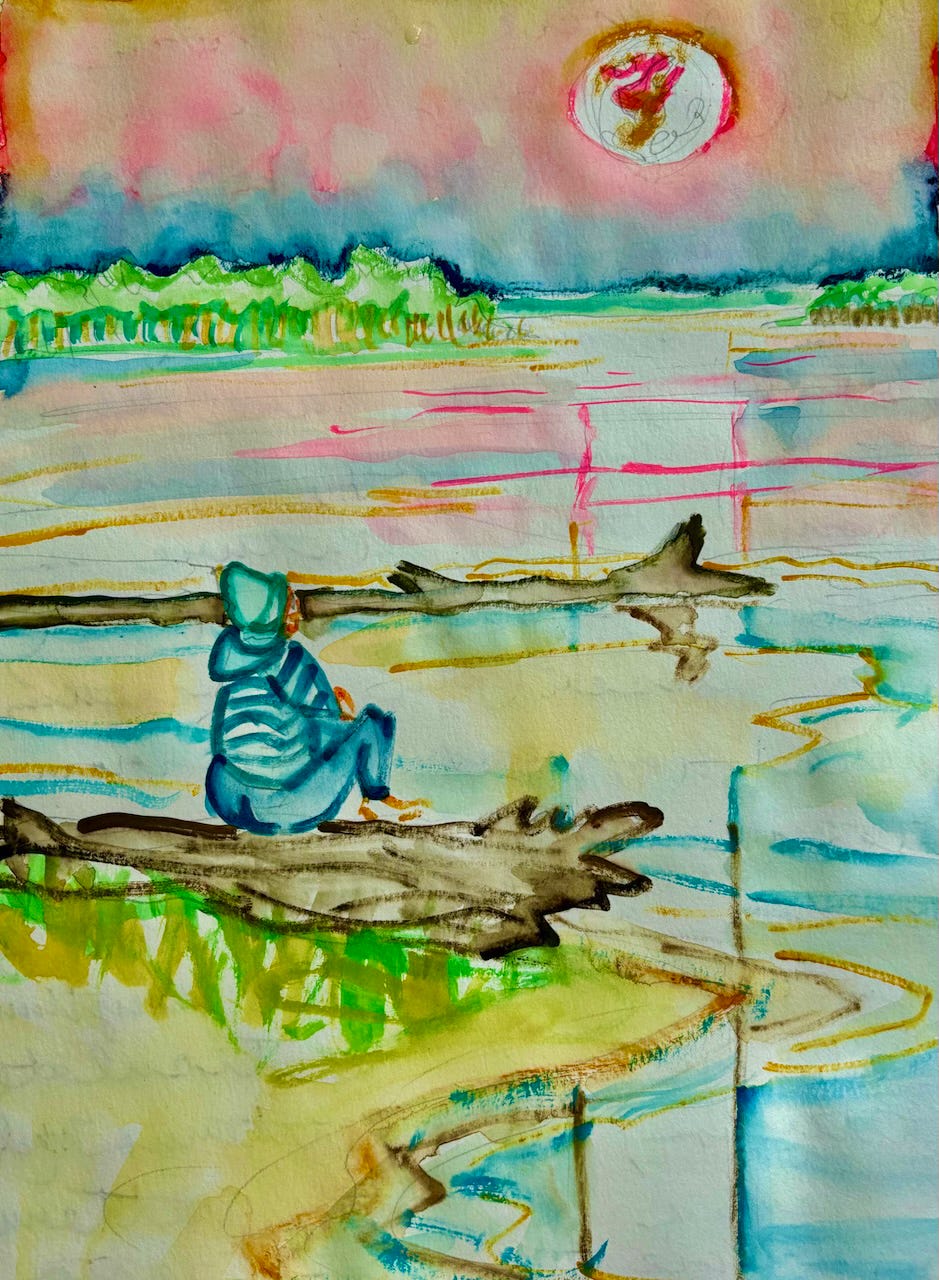
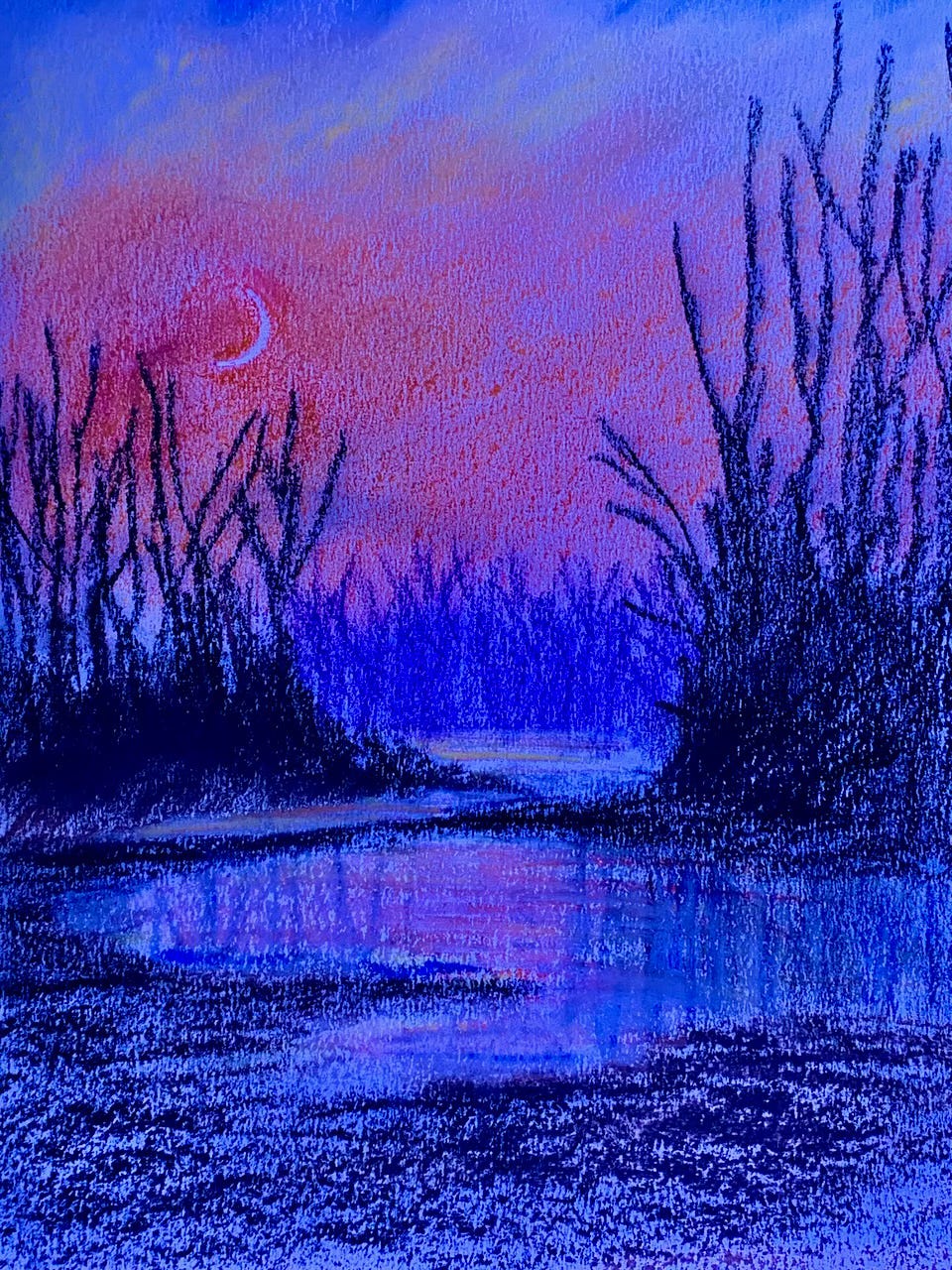


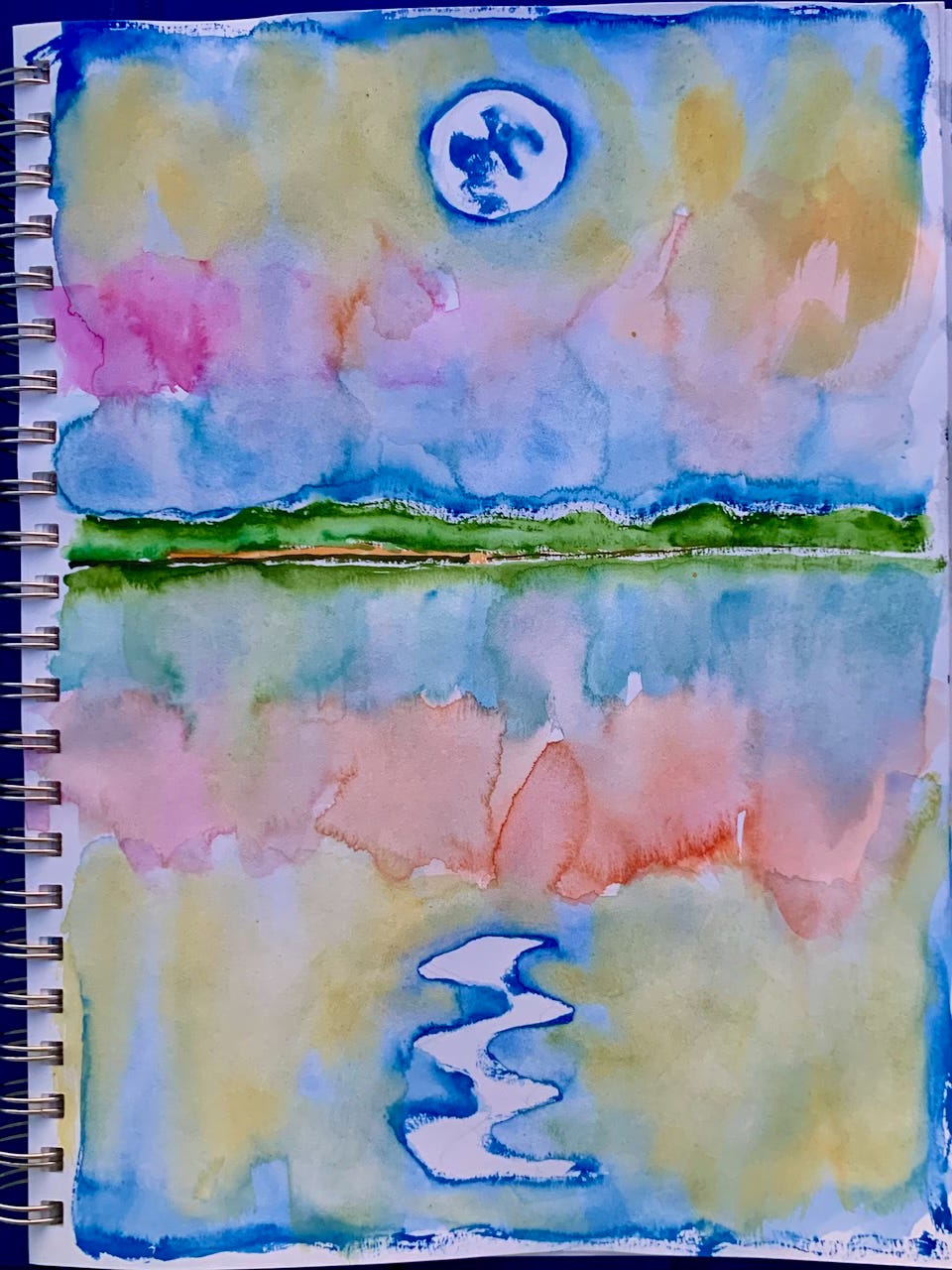


Loving the dive into the watery colours - thanks bother 💚